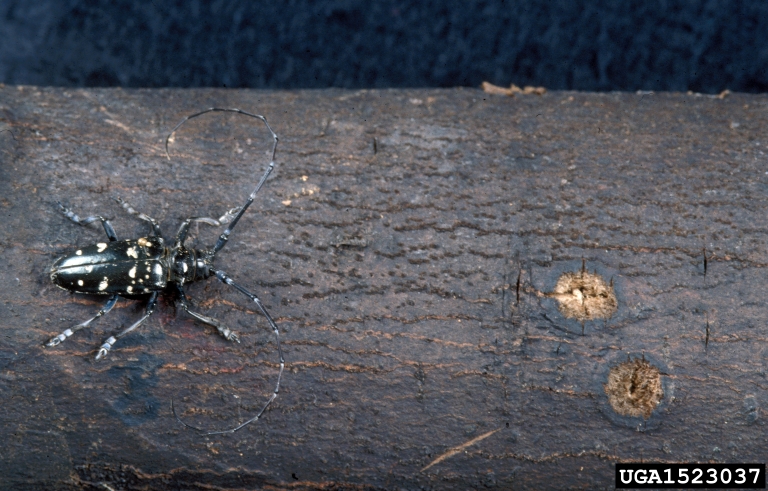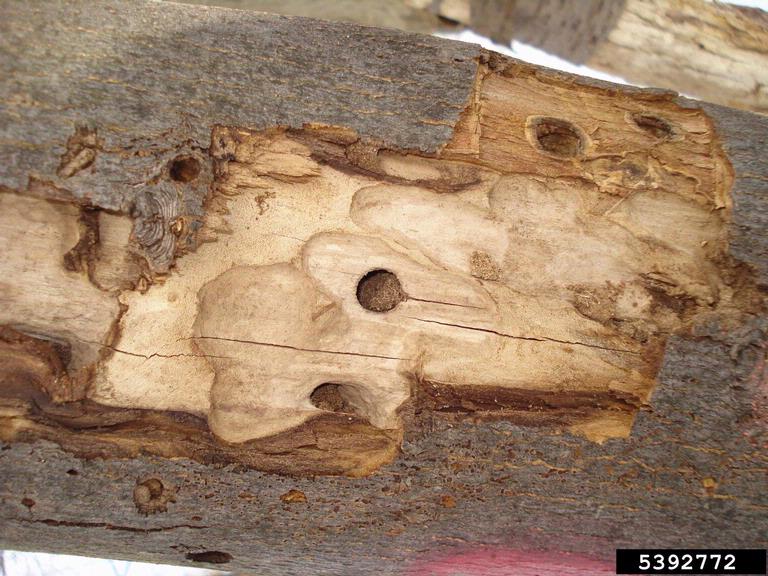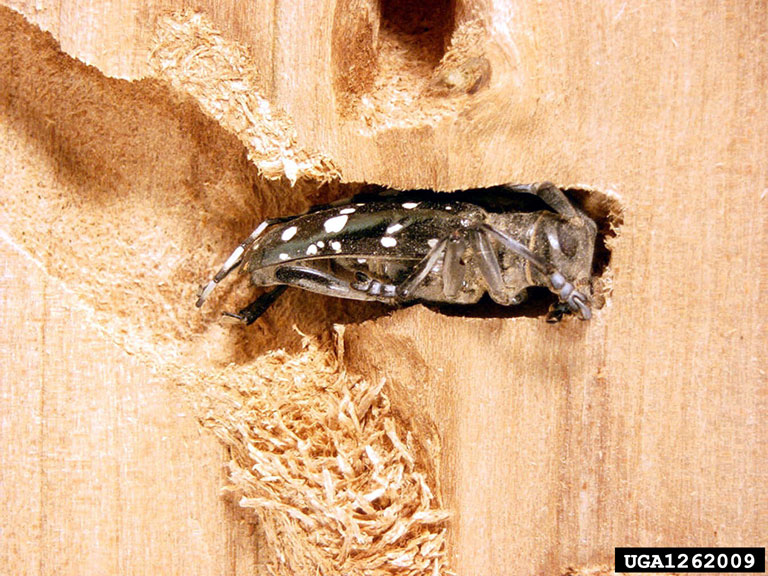Asian Long-Horned Beetle

Asian Long-Horned Beetle
(Anoplophora glabripennis)
Tags: Terrestrial | EDRR
Identification and Reproduction
Identification:
- The Asian long-horned beetle is known as the starry sky beetle in its native range, Asia.
- They are large insects, with bodies 20-35 mm long and 7-12 mm wide.
- Their antennae are 1.5-2 times longer than the body of the beetle. These long antennae are banded black and white.
- This beetle is black and shiny with white spots randomly along their elytron (hard wing shield).
- The ends of their legs are whitish-blue.
- Adult beetles will emerge from July to September.
Reproduction:
- In its lifetime a female beetle can lay between 30-80 eggs.
- Female Asian long-horned beetles tend to mate with the same male beetles multiple times.
- Eggs are laid singly in sites chewed out by the females. Single eggs will be laid at multiple sites and resemble grains of rice.
Habitat & Ecology
- They are capable of flying for short distances.
- Currently, there are no reports of Asian long-horned beetles in BC.
Impacts
- The Asian long-horned beetle feed and impact hardwood species, such as Acer (Maple), Salix (Willow), Populus (Popular), Betula (Birch), Aesculus (Horsechestnut) and several other urban agricultural, rural and forested tree species.
- This insect infects and will eventually kill healthy trees within 3-5 years.
- Large infestations will devastate urban and rural forests.
- It can devastate tree plantations.
- Decrease property values and minimize the environmental benefits green spaces provide.
- Will reduce wood supply and availability of hardwood species.
Signs and symptoms of the Asian long-horned beetle:
- Unusally timed crown discolouration, abnormal thinning and branches dying off, as adult beetles feed on leaves, petioles and tree twigs.
- Egg laying sites chewed out by female can be found on bark and will be 10 mm in diameter with bark reddish-brown.
- Larvae will bore into the hardwood and create galleries or tunnels which can reach lengths between 3.5 to 15 cm.
- Frass, resembling sawdust and wood shavings, will be dispersed near egg laying sites.
- Round exit holes made by emerging adults and will be between 6-14 mm in diameter.
Management
- Report any sightings of the Asian long-horned beetle.
- Check for signs and symptoms of this insect on potentially infected tree products.
- Check trees for beetle damage and to report any suspected Asian long-horned beetle contact the CFIA.
- Do not move firewood or other potentially infested wood over long distances.
- Burn firewood where you buy it.
Resources
Download the BC Invasive Species Alert for Asian Long-horned Beetle here.
Download the CFIA's fact page for quick identification of signs and symptoms of the Asian Longhorned beetle here.
For more information, please refer to the CFIA fact sheet on the the Asian longhorned beetle.
Forest Invasive provides a good resource for more details on the Asian long-horned life cycle and control measures that have been in plact in Toronto, Ontario.
Header photo (Pudding4brains).







